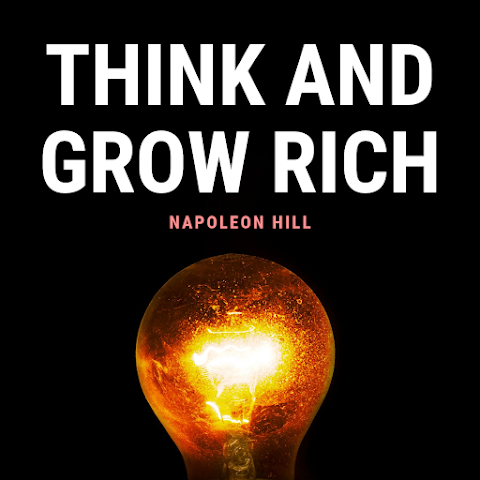Introduction
The Count of Monte Cristo presents a fascinating study of women's roles in 19th-century French society, through characters who both conform to and challenge societal expectations. Alexandre Dumas crafts complex female characters whose struggles and choices reflect the limited options available to women of their time while exploring themes of love, loyalty, and personal agency. Through these characters, Dumas provides insight into the social constraints and possibilities for women in post-Napoleonic France.
Listen on Spotify
Experience the compelling stories of women in The Count of Monte Cristo through our audiobook adaptation on Spotify. The professional narration brings to life the complex female characters, from Mercédès' journey of love and sacrifice to Eugénie's bold defiance of social conventions. Hear how each woman's voice and story contributes to this timeless masterpiece, making it particularly engaging for first-time readers interested in historical perspectives on gender roles.
Historical Context: Women in 19th Century France
To understand the female characters in The Count of Monte Cristo, we must first examine the historical context of women's lives in 19th-century France. The period following the French Revolution and Napoleonic era brought significant changes to women's social and legal status:
The Napoleonic Code and Women's Rights
- Legal status as perpetual minors under male guardianship
- Restricted property rights and financial independence
- Limited divorce rights (abolished in 1816)
- No political rights or representation
- Adultery laws heavily biased against women
Social Expectations and Education
Women's education and social roles were strictly defined:
- Focus on domestic skills and moral education
- Limited access to formal education
- Emphasis on marriage and motherhood
- Strict moral and behavioral codes
- Class-based expectations and opportunities
Economic Realities
Women's economic opportunities were severely limited:
- Dependence on male family members or marriage
- Restricted professional opportunities
- Limited inheritance rights
- Financial vulnerability in widowhood
- Class-based economic constraints
Major Female Characters: Detailed Analysis
Mercédès Herrera
Mercédès represents both the traditional and revolutionary aspects of women's roles in the novel. Her character arc demonstrates the complex choices women faced in balancing personal happiness with social expectations.
Early Life and Character Development
- Catalan origins and cultural identity
- Early relationship with Dantès
- Social pressures and expectations
- Evolution from young love to practical marriage
"I have always remained faithful to what I loved. Is it my fault that you were arrested? Is it my fault that I believed you dead?"
Marriage and Social Transformation
- Transition from fisherman's fiancée to countess
- Adaptation to aristocratic society
- Maintenance of moral integrity
- Balance of social duties and personal conscience
Moral Choices and Personal Sacrifice
Mercédès' journey exemplifies the moral complexities faced by women:
- Choice between loyalty and survival
- Protection of her son versus personal happiness
- Recognition of past mistakes
- Ultimate choice of poverty with honor
Valentine de Villefort
Valentine embodies the young woman caught between filial duty and personal desire, a common conflict for women of her social class. Her story explores themes of:
Character Development and Growth
- Evolution from obedient daughter to independent thinker
- Development of moral courage
- Growth through adversity
- Balance of duty and personal happiness
Relationships and Conflicts
- Complex family dynamics
- Romance with Maximilien Morrel
- Relationship with her grandfather
- Conflict with stepmother
"I would rather die than cause the death of my grandfather."
Symbolic Role
Valentine's character represents:
- Innocence threatened by corruption
- Triumph of true love over arranged marriage
- Resilience in face of persecution
- Redemption through suffering
Eugénie Danglars
Perhaps the most progressive female character, Eugénie actively rebels against societal expectations. Her character represents:
Artistic Ambitions
- Musical talent and aspirations
- Pursuit of artistic career
- Rejection of traditional feminine roles
- Search for personal fulfillment
Independence and Sexuality
- Rejection of marriage institution
- Financial independence through talent
- Non-traditional relationship choices
- Challenge to gender norms
Modern Feminist Interpretation
Eugénie's character can be seen as:
- Proto-feminist figure
- Challenge to patriarchal authority
- Example of female empowerment
- Critique of marriage market
Themes and Analysis
Marriage and Social Status
The novel explores marriage as both a social institution and a personal relationship through various female characters:
- Mercédès' marriage to Fernand as social necessity
- Madame Danglars' strategic marriages
- Valentine's arranged marriage versus true love
- Eugénie's rejection of marriage altogether
Maternal Love and Sacrifice
Motherhood emerges as a powerful theme through characters like:
- Mercédès' devotion to Albert
- Madame de Villefort's twisted maternal instinct
- The absence of Eugénie's maternal feelings
- Impact of motherhood on social identity
Female Agency and Independence
The novel presents varying degrees of female independence through:
- Financial autonomy (or lack thereof)
- Personal decision-making power
- Control over marriage choices
- Professional aspirations
- Resistance to patriarchal authority
Literary and Cultural Impact
Influence on Later Literature
The female characters in The Count of Monte Cristo influenced:
- Development of complex female characters in literature
- Treatment of women's issues in Victorian novels
- Evolution of romantic heroines
- Portrayal of female rebellion in literature
Cultural Significance
The novel's treatment of women reflects and critiques:
- 19th-century gender roles
- Social mobility through marriage
- Female education and accomplishments
- Class and gender intersections
Modern Interpretations
Feminist Readings
Contemporary feminist analysis examines:
- Power dynamics in gender relations
- Female agency and resistance
- Intersection of gender and class
- Critique of patriarchal institutions
Contemporary Relevance
The novel's themes continue to resonate:
- Women's economic independence
- Balance of career and family
- Marriage as social institution
- Female solidarity and friendship
Comparative Analysis
Contemporary Literature
Comparison with other 19th-century works:
- Jane Austen's female characters
- George Sand's feminist perspectives
- Balzac's social criticism
- Victorian women writers
Historical Context
Relationship to historical developments:
- French women's rights movement
- Educational reforms
- Changes in marriage laws
- Economic opportunities for women
Critical Reception
Contemporary Reviews
19th-century reception of female characters:
- Moral evaluations
- Social commentary
- Literary criticism
- Public response
Modern Scholarship
Current academic perspectives on:
- Gender representation
- Historical accuracy
- Literary significance
- Cultural impact
Conclusion
The female characters in The Count of Monte Cristo offer a nuanced portrayal of women's lives in 19th-century France. Through their stories, Dumas explores the constraints and possibilities available to women of different social classes, while raising questions about gender roles that remain relevant today. Their struggles with love, duty, and personal freedom continue to resonate with modern readers, making these characters as compelling now as when they were first created. The novel's exploration of female agency, social constraints, and personal transformation provides valuable insights into both historical gender relations and contemporary feminist discourse.
Through careful character development and complex moral situations, Dumas creates female characters who transcend the limitations of their time while realistically portraying the social and legal constraints they faced. Their stories continue to contribute to our understanding of gender roles, social justice, and personal autonomy in both historical and contemporary contexts.



